Introduction of the whole mud gold cyanide leaching process
2022-08-09 16:12:53
Whole mud gold cyanide leaching process is one of the important process methods for gold extraction. With the continuous development and maturity of technology, the all-slime cyanidation gold extraction method is also more and more popular in the majority of gold concentrators. So how to use the all-slime cyanidation method to extract gold concentrate? The process flow of the all-slime cyanidation gold extraction method can be divided into six stages: crushing and screening, grinding-gravity separation, secondary classification, dedusting and pulping, cyanidation leaching and desorption electrolysis. The specific process flow is as following:
1. Gold ore crushing and screening process
In order to improve the efficiency of the production line, a two-stage and one-closed-circuit crushing and screening process is often used at this stage. The specific process is as follows: the raw gold ore enters the jaw crusher through the feeder for coarse crushing. The coarsely crushed products are transported by the belt conveyor into the vibrating screen for screening. The ore particles that meet the requirements enter the powder silo for storage. The unqualified ore particles are returned to the cone crusher for re-crushing. After that, the ore discharged from the cone crusher and the ore discharged from the jaw crusher enter the screening machine together for processing. Such two-stage one-closed-circuit crushing and screening operation can prevent the over-crushing of ore and improve the working efficiency of the crusher, and at the same time, it can also separate useful minerals and gangue minerals as much as possible.
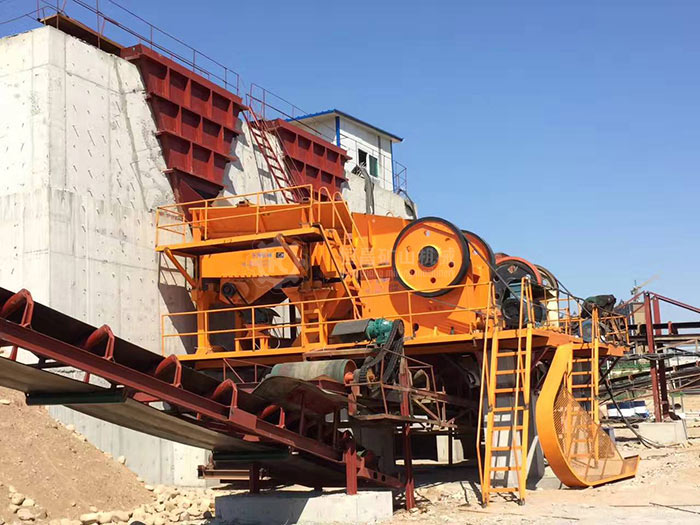
2. Gold ore grinding-gravity separation process
The materials stored in the powder silo enter the grid-type ball mill through the screw conveyor for grinding. Part of the products after grinding has achieved complete dissociation of concentrate and gangue minerals. In order to prevent the waste of materials caused by over-grinding, the combined gravity separation process can be used to separate those gold concentrates in advance.
The specific process is as follows: the products after grinding enter the jig for a re-election. The overflow part goes into the pump box for storage. The underflow part is pumped into the shaker by the slurry pump for secondary and tertiary reselection. Gold particle products can be obtained after reselection. The remaining pulp is pumped into the desliming hopper by the slurry pump for washing.
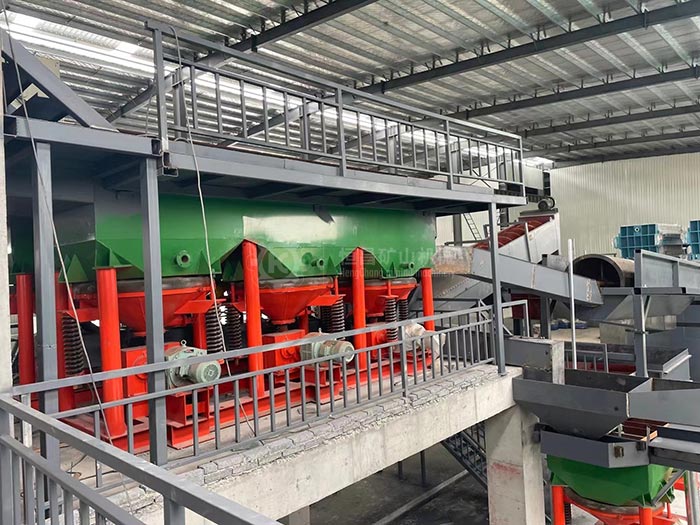
3. Gold mine secondary classification process
The underflow part of the desliming bucket and the overflow part of the jig enter the pump box for storage, and then enter the hydrocyclone for a classification operation. The overflow part is pumped into the hydrocyclone group for secondary classification. Both the hydrocyclone and the underflow part of the hydrocyclone group will return to the ball mill for re-grinding. The former will enter the grid-type ball mill and the latter will enter the overflow-type ball mill for grinding.
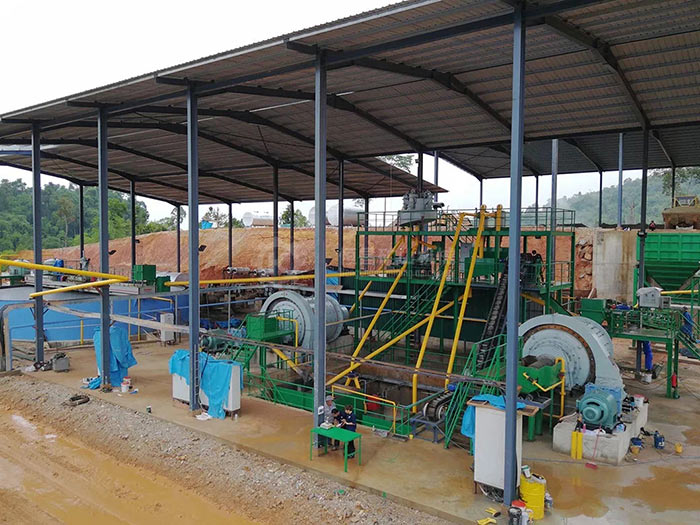
4. Gold mine dedusting and pulping process
Because there are still wood chips in the pulp, in order to avoid these impurities affecting the leaching effect, it is necessary to use a chip removal screen to treat the pulp. The pulp mixing operation is mainly carried out in the thickener. In order to meet the cyanidation reaction conditions, the concentration of the pulp should be controlled at 35%-38%, and its pH value should be kept at 10-11. In actual production, the pulp concentration needs to be controlled by the bottom flow of the thickener and the amount of added flocculant. As for the pH value, it can be controlled by adjusting the amount of lime in the raw ore and sodium hydroxide in the concentrator.
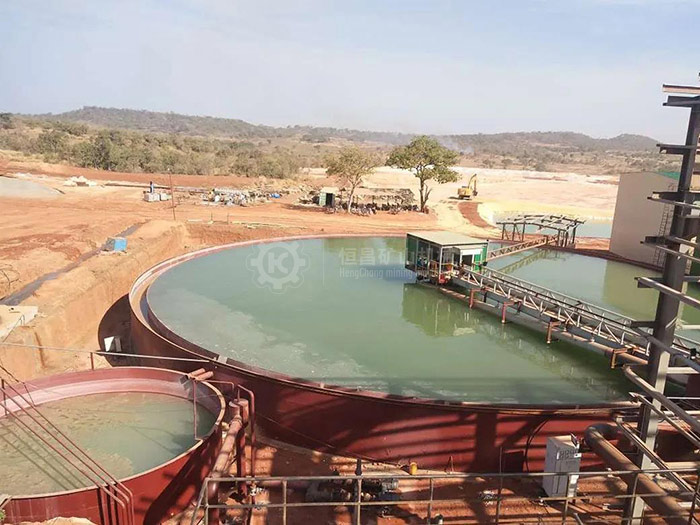
5. Gold ore cyanidation leaching process
The pulp flowing out from the bottom of the thickener is pumped into the leaching tank (3 tanks) by the slurry pump for pre-dipping. The prepreg stage mainly controls CN-concentration, oxygen content and inflation pressure. By adjusting each air valve, the surface of the pulp can evenly disperse bubbles with a diameter of about 5-10mm. This process can be achieved by an air compressor. After the pre-leaching operation, it is necessary to carry out the activated carbon countercurrent adsorption stage of the pulp, that is, the adsorption operation while leaching. At this stage, five leaching tanks are required to complete the operations of adding carbon, stringing carbon and extracting carbon. After the operation of the carbon extractor, the leaching pulp flows in the opposite direction to the original pulp. The above completes the pulp cyanidation leaching operation.
6. Gold ore leaching solution desorption electrolysis process
The desorption operation of gold mine is mainly carried out in the desorption column. During desorption, the washed gold-loaded carbon was loaded into the desorption column, and then an aqueous solution of NaCN and NaOH was added to immerse the carbon layer. Under pressure or normal pressure, use an electric heater to heat the desorption column to 90℃~95℃. After a period of desorption, desorption carbon and gold-rich desorption liquid can be obtained. The method for recovering gold from gold-rich desorbent is mainly electrolysis. The desorbed liquid enters the electrolytic cell for electrolysis to obtain gold mud. The desorption carbon can be reused by adding a certain proportion of new activated carbon after regeneration.
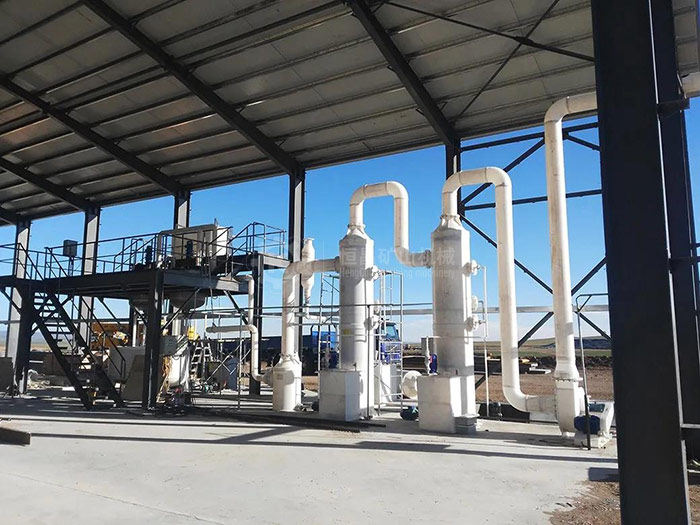
The above is the complete process flow of gold ore all-slime cyanidation. When designing the all-slime cyanidation process, the process flow, process parameters and equipment layout need to refer to the feasibility test report of the ore.